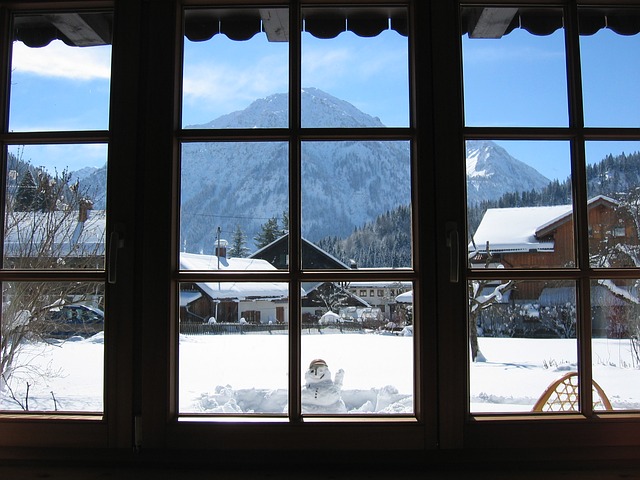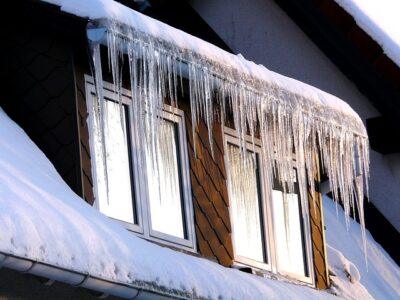When winter hits, you should not feel the difference in your home. If you’re feeling cold air leaking in, though, what that really means is that 10 to 20 percent (or more) of your heat is escaping through openings along the window or directly through the window glass.
Since you’re responsible for creating your own heat, you definitely don’t want to waste 10 to 20 percent of your effort just keeping up with your windows. Thankfully, there are a number of simple measures you can take to improve the insulation of the windows in your home; choose the ones that fit your lifestyle and keep the cold air out.
1. Draft snakes and weather stripping
When you have a minor leak along the edges of windows, you might want to try installing weather stripping along the frame. There are many types of weather stripping commercially available for filling gaps along the edges of windows, or you can make your own. You can staple strips of felted wool along the top and bottom of the window sash to prevent drafts there, or cut foam strips for the same purpose. Felt is a quick and easy solution, but it will need to be replaced every year or two as the fibers wear down. To fill gaps in a double-hung or sliding window, you’ll need aluminum or another durable material cut and shaped to fill the space.
New Survival Energy Product Makes Every Window A Powerful Solar Charger
For single-hung windows whose drafts come mainly from the bottom edge, you can make draft snakes. Draft snakes are tubes of insulating heavyweight fabric, such as wool felt, filled with rice or sand to provide weight. You can easily sew one out of an old sock, shirtsleeve, or other scrap fabric by making a tube sealed at one end, and then filling and sealing the other end. Rest it on the windowsill snug against the sash to block drafts. If you have outer sills, you can install draft snakes outside as well; consider stapling it in place to prevent it from moving in the wind.
2. Shutters and foam
If you don’t need to see out of a window, as is the case with basement or attic windows, consider blocking it with polystyrene foam insulation. Cut the foam to the exact dimensions of the window frame to ensure a snug fit, and slide it into place. You can reuse foam seals for windows year after year, or leave them up through the summer to prevent heat leaking into your home. When you remove seals for the season, label each piece with the window location to which it belongs to speed reinstallation.
Another option for fully blocking leaky windows is to construct shutters on the exterior or interior of your house. This is a greater investment in time and materials than any other option, but allows you the flexibility of opening shutters on milder days and closing the house on the windward side during a storm. You can construct shutters in a variety of styles: hinged, bi-fold, and rolling shutters are all possibilities. The simplest shutter is a single-hinged panel that blocks the whole window. Exterior shutters provide better insulation but are more difficult to open and close in poor weather; interior shutters can be easier to manage. On sunny days, opening shutters to allow passive solar heat on the sunny side of the house can help to keep the interior warm.
3. Window films, shades and fabric insulation
If you need to be able to see out of a window, but need the insulation of a fully covered window, construct a removable window film. Cut sturdy framing strips or wood to measure inside the window frame, and staple vinyl sheeting over the edges. The resulting films can be inserted into the windows for the season while still allowing for light to enter and enough transparency to see out.
You can create a similar opaque or translucent construction with any fabric. For the best insulation, adhere heavy fabric or multiple layers to your frame. These fabric window insulators can be easily removed after the winter.
One of the easiest ways to create insulation is by installing fabric or vinyl thermal shades. Roman shades made from heavy fabric will provide a bit of protection from drafts. Install weight at the bottom of the shade or fastenings along the sides to improve the shades’ capacity for blocking drafts.
Regardless of what method you choose, it is straightforward and sensible to begin blocking drafts in your windows right away. Examine your windows for drafts, and devise a solution for each one; even a curtain or a towel is better than nothing.
However, taking the time to create more permanent solutions will pay off in comfort and style, and with so many simple options for blocking drafts, there is no reason to be losing your valuable heat to winter’s edge.
What tips would you add to this story? Share them in the section below:
 Off The Grid News Better Ideas For Off The Grid Living
Off The Grid News Better Ideas For Off The Grid Living





